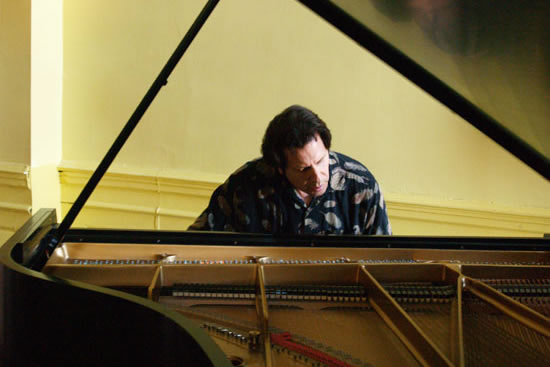
Photo by Michael Wilderman/jazzvisionsphotos.com
Joel Futterman, Piano and Indian Flute
Determined to push the limits of the piano to techniques never heard in jazz, Joel began a 25-year regimen of practicing 8-10 hours a day. During this period, he developed a three-hand technique based on completely autonomous playing between the hands. With more than 100 recordings, he is considered one of the most innovative yet enigmatic new music pianist